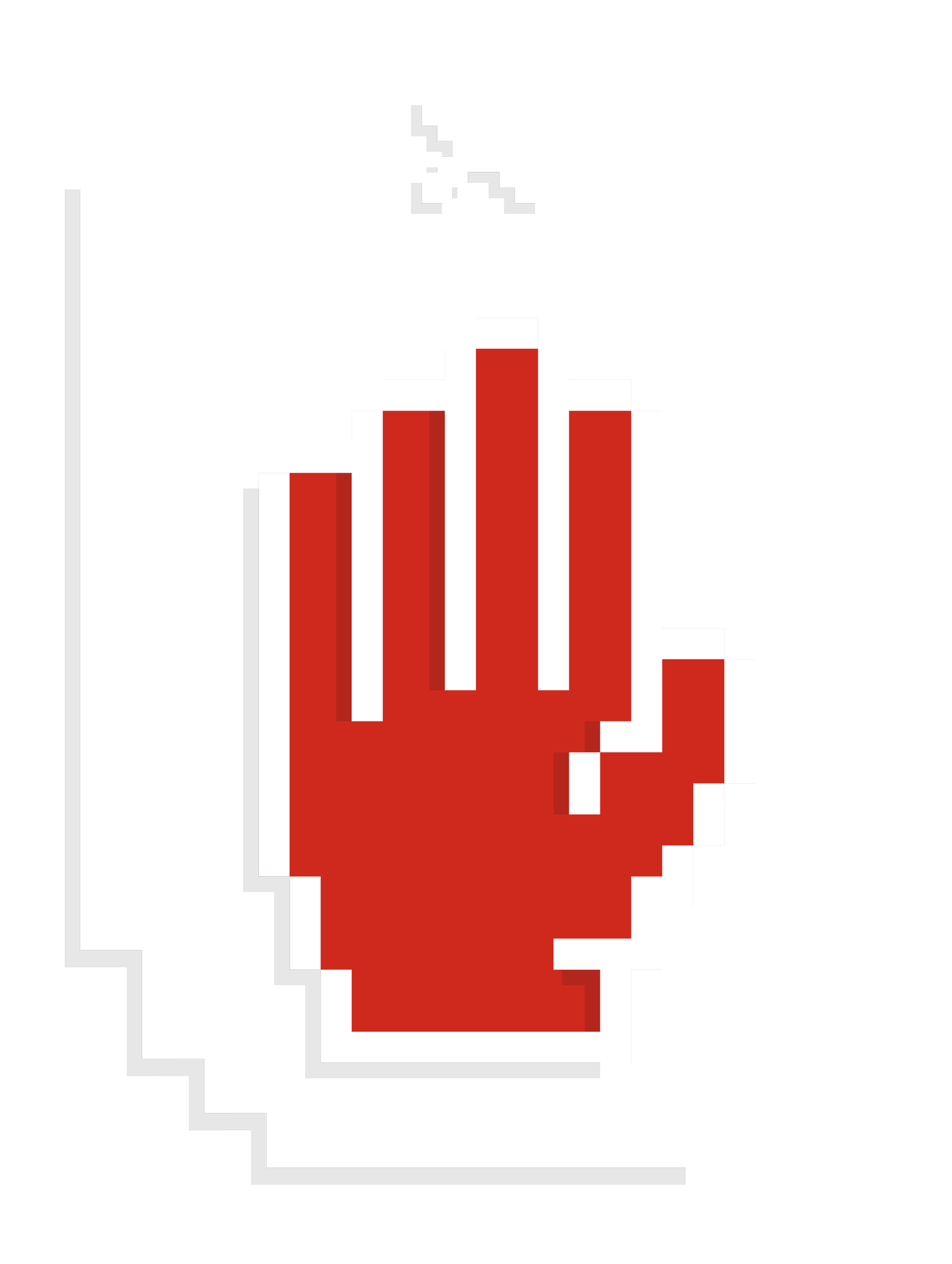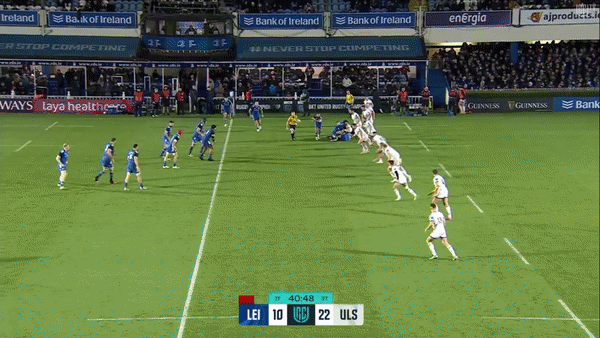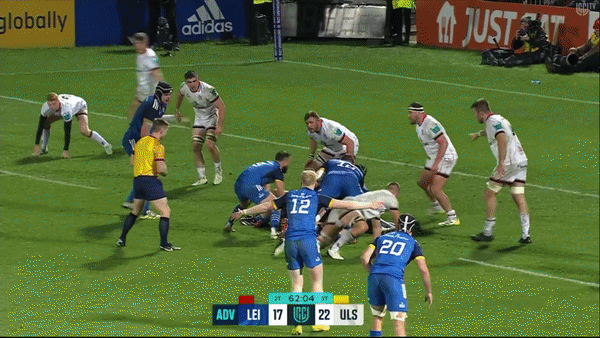3 Things that Turned the Leinster v Ulster Game
There's no two ways about it. This loss will hurt. At the 36 minute mark, it felt so different.
Leading 22-3 away, chasing a 4-try bonus point with Leinster down to 14, first vs second in the league; Ulster couldn’t have asked for a better start. We could go back over these first three tries, but realistically, this game was all about Ulster proving that they had closed the gap on Leinster. So how did Ulster lose control of the lead? Let’s find out.
Ulster leaving the door ajar
Following Ulster’s 3rd try, they received a kick off from Leinster inside their own 22, with the option to kick the ball straight out. John Cooney instead decided to send up a short, contestable box kick, which Leinster won.
While there's merits to both keeping the ball in play and kicking it straight out versus 14 men, Leinster got an instant opportunity to chase Ulster’s lead and so the door handle creaked slightly.
From the 18 phases that ensued before Leinster’s first try, Ulster challenged the ball at just 2 rucks despite having the extra defender.
Sure there were a few double tackles - and a few excellent tackles from Treadwell behind the gainline later on - but as we can see above, for the most part Ulster’s tackles were upright and their line speed passive. Ultimately, Ulster were not defending like they had an extra player to commit in defence and so the creaking handle gave way to the door creeping open.
A high tackle penalty later, Ulster were defending a lineout 10 metres out.
Again you could argue the toss between competing in the air or staying on the ground - Henderson comes very close to stealing the ball in the clip above. However, like the short box-kick earlier on, Ulster’s decision-making in their own half left the door ajar for Leinster. Against a side with Leinster’s quality, that proved enough to give the home side an ‘in’ at a crucial point of the game.
Management in the middle
Despite that Leinster try on half time, Ulster kept the reasonable buffer of a 22-10 lead starting into the second-half with the intention seemingly to keep the ball in play and burn off the home team’s 14-man defence. This approach seemed like it could pay off early on too as better line speed and the work of Hume and McCloskey forced a turnover penalty.
The lost lineout that followed however was to be Ulster’s last entry into Leinster’s 22 for the next 27 minutes (3 in total over the second half). So what led to this? Ulster’s game management in the middle third between the 22s.
In principle, the idea of keeping the ball in play and moving it around quickly against a 14-man defence sounds good. When taking this approach though, it's also important that the attack continues to challenge the defence and make them sweat.
If we look at the example above, Ulster fail to do that in this instance, going backwards over 6 phases while Leinster essentially only have to defend 35 metres of space. In sequences like this where the attack stagnated after 3 rucks, Ulster turned down the kicking option to progress upfield too often. Moreover, when they did enter kicking duels, Ulster often came off second best.
Taking the GIF above, Ulster run to draw up winger James Lowe before kicking behind him, hoping to isolate Hugo Keenan and win the ball back higher upfield. However, Keenan realises this and returns a kick. The pragmatic option would be for Lowry to kick again - possibly even to the left with Keenan dragged across. Instead, Lowry and McIlroy choose to run the ball back instead and Leinster use Ulster’s own trap to win a turnover through Porter.
These issues with progressing upfield would persist in Ulster’s attack for the bulk of the second half, felt most dearly during…
7 Manic Minutes
There were many small errors in Ulster’s performance last Saturday, but the majority of the damage was undoubtedly done in the period between the 56th and 63 minutes. Taking this moment below alone that kicked it off, there’s a seemingly innocuous head injury that saw Henderson go off, Moore being tackled into touch, Leinster taking a quick lineout, Keenan’s break and Lowry being penalised for playing the 9.
Any one of those 5 things alone could have turned the tide against Ulster, nevermind all 5 of them at once. What followed from the Lowry penalty only added to swell.
While Ulster’s forwards get quite narrow here, they’ve also managed to hold out Leinster’s pack for the most part. Where both Ringrose tries will sting is how the Leinster 13 stepped inside the centre cover on both occasions.
For this first try above, Hume exposes himself with the length of his stride - meaning that he can't change direction once Ringrose steps back inside.
For the second 4 minutes later, McCloskey over commits to the static Byrne, opening the space for Ringrose to scythe through.
Two yellow cards for Hume and Timoney - and another frustrated 8 phase attack in midfield between tries - added insult to injury. Over 7 manic minutes, the momentum of the game - and lead - had now well and truly swung in Leinster’s favour.
While this review may come across as critical in the main, there were positives in Ulster’s performance too. Even before Leinster’s red card, Ulster started the game strongly. The speed with which they built the lead, based on the strength of their maul in particular, shows that they can hurt Leinster. Even some of the mistakes that were made last Saturday were uncharacteristic of Ulster this season.
However, what’s key for Ulster now - with the ability they’ve shown over the last 3 seasons - is taking the final step. Staying switched on in defence, being patient with the kicking game when the running game stagnates in midfield, maximising their number of maul opportunities. Do that against Sale this weekend and Ulster will be right back on track.















